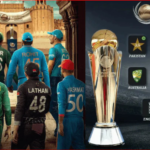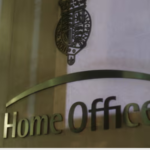The Impact of Poor Eyesight on Driving: A Call for Stricter Regulations
Drivers born between 1934 and 1943 are facing an increased risk of losing their driving licenses, according to recent DVLA data. In fact, a shocking 10.2% of drivers in this age group have had their licenses revoked, with eyesight issues being the primary cause. Furthermore, Dr. Carol Hawley of Warwick Medical School shared her concerns about these alarming statistics, stating, “A third of all drivers stopped needed corrective glasses or lenses for driving. However, 40% hadn’t had their eyesight checked in over two years.”
Alarming Trends in Vision and Driving Safety
The issue is not limited to older drivers. Indeed, a DVLA roadside survey revealed that 50 drivers failed the vision test. Moreover, half of those prescribed glasses for driving were not wearing them when stopped. Surprisingly, some were able to avoid a license ban by proving they had their glasses with them and subsequently passing a follow-up vision test.
David Cartwright, Chair of Eye Health UK, stressed the critical role of eyesight in safe driving. “Ninety percent of the information needed for driving is visual. Even slight vision impairment can slow reaction times and affect hazard perception,” he noted. He also emphasized the importance of regular eye tests, especially for those experiencing any changes in vision.
DVLA Statistics Highlight Risk by Age

Vision-related licence revocations vary significantly by age:
- Over 90: 5.9% affected by vision issues. , Ages 71-80: 2.3% , Ages 61-70: 1.8% , Ages 41-60: 1% , Ages 25-40: 0.2% , Under 25: 1%
The data indicates a growing problem among older drivers, but it also highlights the need for better vision monitoring across all age groups.
Advocacy for Stricter Vision Checks
The Association of Optometrists (AOP) is pushing for a law requiring mandatory vision checks for:
- First-time licence applications.
- Licence renewals.
- Every three years for drivers over 70.
Adam Sampson, CEO of the AOP, emphasized the importance of these changes: “The current number plate test is inadequate. We need reliable methods to ensure drivers meet the required standards.”
Shocking Findings from Optometrists
Recent research shows that six out of ten optometrists have encountered patients who continue to drive despite having vision below the legal standard. Eye health often deteriorates so gradually that drivers don’t realize their vision is affecting their driving. Professor Julie-Anne Little highlighted, “Poor eyesight slows reaction times and compromises road safety.”
Why Regular Eye Exams Matter
The DVLA mandates that drivers must read a number plate from 20 meters (66 feet) and identify at least six lines on the Snellen chart. However, many drivers neglect regular eye tests, leading to dangerous situations on the road.
Emma, a road safety advocate, urged families to take action: “If you’re worried about a loved one’s vision, encourage them to get an eye test. It’s better to be safe than sorry.”
The Road Ahead for Safer Driving
With nearly three million British drivers at risk of losing their licences due to vision issues, stricter regulations could be a game-changer. Regular vision assessments are not just essential for individual safety but also for the well-being of all road users. As Adam Sampson concluded, “It only takes one mistake to cause a catastrophic accident.”
Conclusion
Maintaining good vision is crucial for safe driving. Regular eye exams, adherence to legal vision standards, and stricter regulations are necessary steps to ensure road safety. If you’re a driver, don’t wait—schedule an eye test today to keep yourself and others safe on the road.














